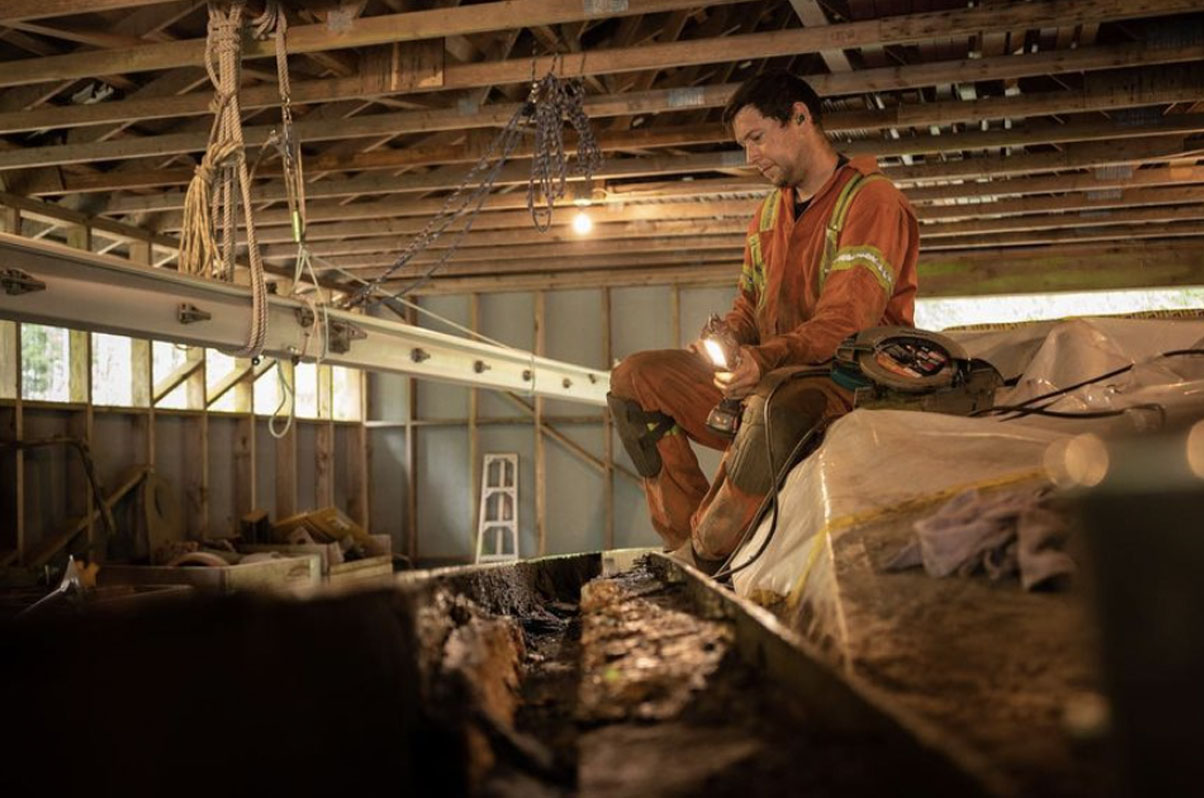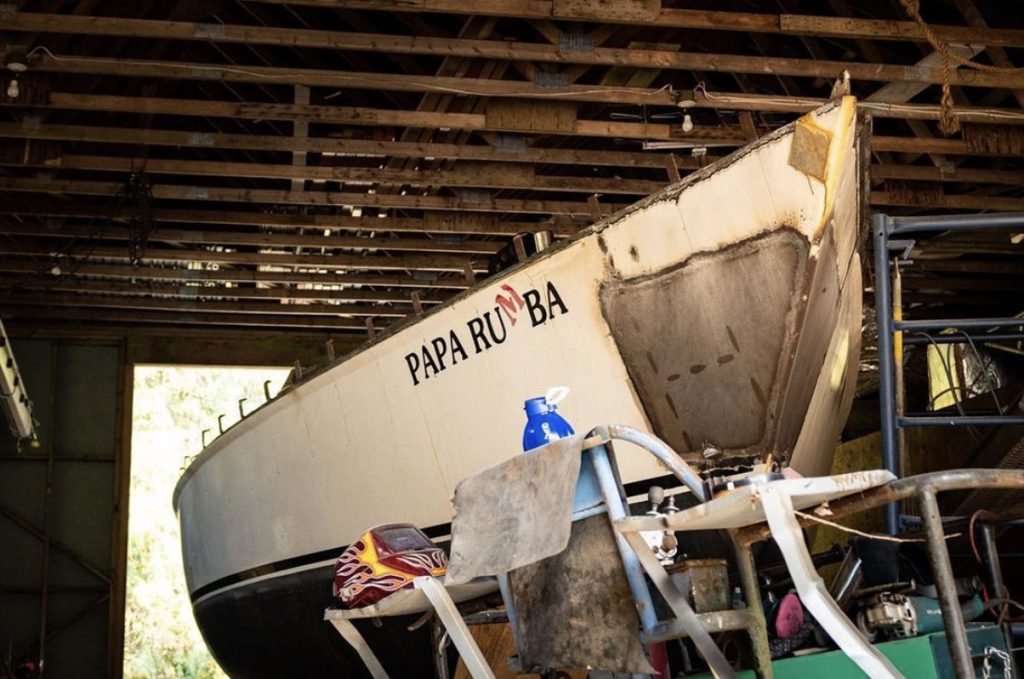
In October of last year we decided to haul our boat out of the water, thinking we would be back to sailing a few months later. Well, it’s been more than a year and we still aren’t ready to go back to life at sea. Our story isn’t really a unique one. It’s pretty normal for people to decide to pull their boat out of the water for some refit work and end up spending a lot more time fixing things than they had expected, especially when owning a steel boat like we do. Sometimes what was supposed to be a quick job ends up turning into years of refit. Luckily, we aren’t looking at that long, but we are looking at closer to a year and a half- we initially thought things would only take us six months…
There have, however, been quite a few unique things about our refitting adventure. The first of those is the location where we have done most of the work on our boat and how we got there. Most people do their boat work in a boat yard somewhere. We on the other hand ended up in a workshop about 10 km inland. After spending a couple of weeks in the boat yard with the rain and wild blowing our tarps off and soaking the boat, we decided we needed to find somewhere else to do the work or nothing was going to get done. We started looking for a shed to move into and luckily one of Logan’s family members had a space that was going to work perfectly for us. In order to get the boat there we hired a boat moving company. This sounds simple enough, but we live on an island where there is only one local boat moving company that is able to move a boat of our size. That company had to come from the most southern part of the island which is about a 2 hr drive from where our boat was. But moving the boat was our only option for getting the project finished, so we went ahead and booked the move. In the meantime, we got the boat all ready to move- removing the mast, dodger and anything else that may add unwanted height to the boat. We were all ready to get moving and into the shop, but then the flooding hit… Remember the flooding in November of last year? The flooding that wiped out bridges, roads and towns all over the province? Well, it also wiped out the road between us and the moving truck- in two separate places. This curve ball from mother nature cost us an extra month as we waited for roads to open back up so we could get the truck up to us to move the boat.
Finally the day came when we were able to move the boat. To say this was a stressful day is an understatement. We watched our 35,000 lb boat be loaded onto a trailer and hauled down a highway. It was terrifying, but luckily the company we hired did a great job of moving her safely into her new temporary home.

Then began the refit work. We knew that we had some heavy work to do in our chain locker and some work to do to repair rust issues in our bulwarks, but we didn’t know to what extent the issues were in either of these areas. So we started with the chain locker. We assessed the damage and ended up cutting out two large plates, replacing them and ribs and rebuilding 90% of the chain locker. This project also meant that we had to pull apart our entire v-berth interior so that we wouldn’t have any fire issues when doing the repairs. The chain locker took us quite a few months to finish, not only because of the physical work, but the amount of research we had to do in order to finish the project properly. Fixing a steel boat sounds simple until you realize that there is a very specific processes that needed to be followed for the welding heat not to warp the boat, specific parts to be cut out in an specific order so that things didn’t warp and a specific process to be followed for paint to adhere properly to things. A good chunk of our time was taken up just trying to decide on the best process to follow in order to get the job done properly.
Once we were finished with the chain locker we moved on to the bulwarks. Starting out this project was somewhat of a mystery to us. We knew we had some rust issues that had caused holes in the bulwarks, but we didn’t know how much damage was. You see, our bulwarks were essentially hollow square tubing. Somewhere in the 25 years of our boat’s life, people had drilled holes into the bulwarks without properly sealing them and salt water and air had gotten into the tubes and created rust. There was no way to tell how far the rust had gone without cutting into the bulwarks, so we started to do that. It didn’t take long for us to find holes going right through the deck as well as through the bulwarks. This lead us to the conclusion that the entire bulwarks were going to have to be replaced and our interior pulled apart to make that possible.
Along with the interior went our timeline to get back in the water. It was going to be many more months before we were ready for the water.
So here we are, a year later, still not even close to being ready to go. Our chain locker is almost finished, our new bulwarks are mostly on and we have started preparing our interior to start to go back together. But we are still months away from being back in the water and ready to go again. This project has tested is in many ways. We have accomplished things we weren’t sure we were capable of and gotten a lot farther than we knew was possible while learning skills we didn’t even know we needed.
Our timeline has moved from six months to something closer to 18 months. But as I am consistently reminded by people that 18 months is still a pretty short timeline for a boat refit project. Many people buy steel boats expecting to be ready to cruise the world and instead spend years fixing them. We will not be in the boat shed for that long and before we know it we will be back to cruising the beautiful waters of BC, but until then we are sharing our struggles, frustrations and wins with you through this newsletter as well as through our Youtube channel Wayward Life Sailing.
By Wayward Life
- Website: https://www.the-wayward-life.com/
- Instagram: http://instagram.com/the.wayward.life
- Facebook: http://www.facebook.com/thewaywardlife
- Youtube: https://www.youtube.com/waywardlifesailing
